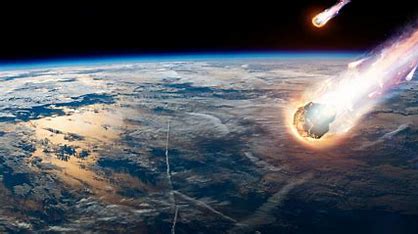Asteroid 2024 ON: The 720-Foot Space Rock Passing Close to Earth This Month
Asteroid


Space enthusiasts are in for a treat as a massive 720-foot-wide asteroid, designated 2024 ON, is set to make a close approach to Earth on September 15, 2024. This asteroid, roughly the size of two large football fields, will pass at a distance of about 620,000 miles (1 million kilometers) from Earth, which is about 2.6 times the distance from Earth to the Moon. Although this might sound close, in astronomical terms, it still represents a safe distance with no threat of impact on our planet.
**A Closer Look at Asteroid 2024 ON**
Asteroid 2024 ON was discovered earlier this year by the Atlas Sky Survey. It is classified as a potentially hazardous asteroid due to its size and the proximity of its orbit to Earth. Despite this classification, astronomers and NASA confirm that there is no risk of the asteroid colliding with Earth during its upcoming flyby. The asteroid's size and speed offer a rare opportunity for scientists to study its composition and trajectory, potentially providing insights into the characteristics of other near-Earth objects.
**When and Where to Watch**
For those in the northern hemisphere, the asteroid will be visible through telescopes or even binoculars on the night of its closest approach. The Virtual Telescope Project plans to stream the event live, providing space enthusiasts worldwide a chance to witness the flyby in real-time. This rare astronomical event will offer both scientists and the public a unique glimpse at one of the larger near-Earth objects passing by this year.
**Astronomical Significance and Future Implications**
Asteroids like 2024 ON, remnants from the formation of the solar system 4.6 billion years ago, hold valuable information about the early solar system's materials and conditions. Observing such close approaches helps refine our understanding of these space rocks' behavior, guiding future planetary defense efforts. NASA's continued monitoring and tracking of near-Earth objects are part of a broader strategy to ensure Earth's safety from potential asteroid impacts.
With advancements in technology, missions such as NASA's DART (Double Asteroid Redirection Test) are testing methods to alter the course of asteroids, showcasing humanity's growing capability to protect the planet from future space hazards.
As asteroid 2024 ON approaches Earth, the world watches not with fear but with curiosity and excitement, appreciating the wonders of space and the strides being made in the field of astronomy.
For those interested in witnessing this event or learning more about it, keep an eye on live streams and updates from space agencies and observatories.
Sources: NASA near-earth object program, JPL www.jpl.nasa.gov/asteroid-watch
